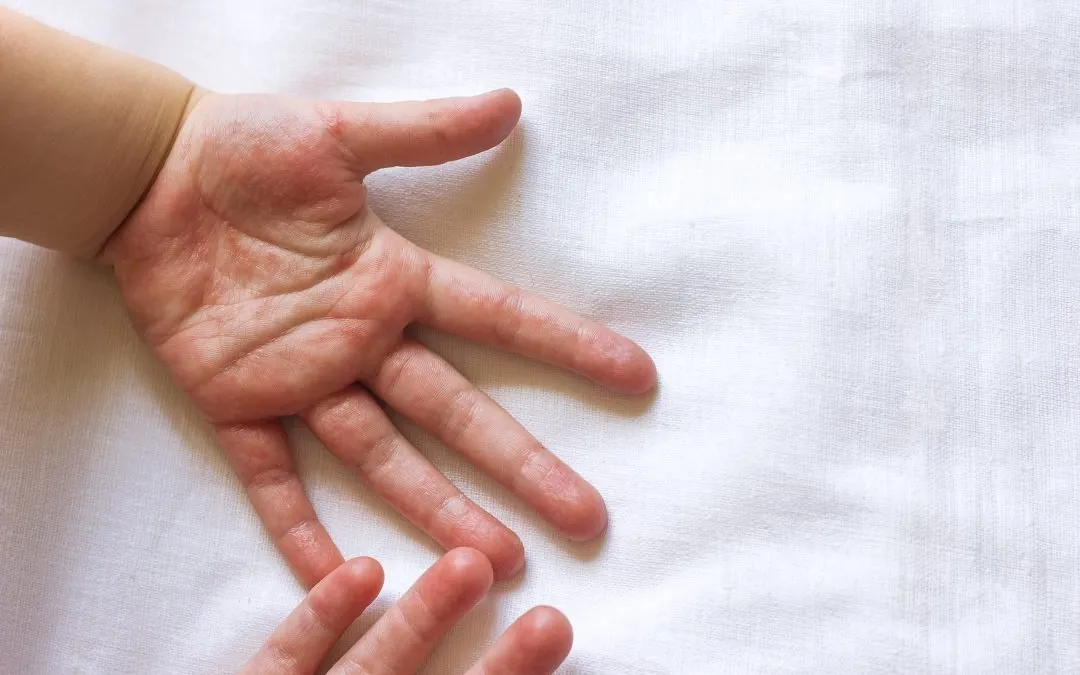
Kids love to interact with everything around them. Plastered to a fishtank while you grab some fish food from Wet Pets, running immediately to the toys at school, and somehow get into the flowerpot at home. While that curiosity is admirable, it also exposes them to sickness. Hand, foot, and mouth disease (HFMD) is one illness going around.
While preventable with good hygiene, hand, foot, and mouth disease (HFMD) can be an unsettling experience for both parents and children. As a common viral illness that spreads rapidly among young children, it’s understandable to be concerned about how long the symptoms will last. The duration of symptoms is one of the most pressing questions. So, how long does hand, foot, and mouth disease last?
Let’s break down the typical timeline of the illness, what you can expect, and when you might need to visit our urgent care center.
Duration of Hand, Foot, and Mouth Disease
Hand, foot, and mouth disease typically lasts around 7 to 10 days. This duration includes the time needed for the body to overcome the virus and for symptoms to resolve. The illness often begins with a fever, followed by a characteristic rash on the hands, feet, mouth, and sometimes the buttocks. Children may also develop painful sores in their mouths, making it hard for them to eat or drink.
While symptoms are generally mild, they can still cause significant discomfort, particularly for young children who may not understand why they are feeling unwell. It’s important to remember that, despite the discomfort, the illness usually resolves on its own without requiring specific medical treatment.
What Are the Traits of HFMD?
HFMD progresses in distinct stages, each lasting a few days:
- Fever: The first symptom of HFMD is often a fever, which can be accompanied by sore throat and reduced appetite. The fever typically lasts 2-3 days and is usually mild to moderate, though in some cases, it may be higher.
- Rash and Blisters: After the fever subsides, a rash or blisters will usually develop on the hands, feet, and sometimes on the buttocks. The rash often looks like red spots or small, fluid-filled blisters. This rash can last anywhere from 5 to 7 days.
- Mouth Sores: Painful sores inside the mouth are another common symptom of HFMD. These sores can make it difficult to eat or drink, which is why keeping the patient hydrated is especially important.
Are There Factors That Affect Recovery?
The duration of HFMD symptoms can vary depending on several factors, including the patient’s age and overall health:
- Age: While HFMD is most common in children under 5, older children and adults can also get it. Symptoms in adults are usually milder and may not last as long as in younger children.
- Hydration: Staying hydrated is crucial during recovery. Mouth sores can make it difficult to drink fluids, which can lead to dehydration. Encourage small, frequent sips of water or cold drinks to prevent dehydration.
- Immune System: A weakened immune system can prolong the recovery time. Children with compromised immune systems may take longer to recover from HFMD, and symptoms may be more severe.
When Should I Visit AFC Gastonia?
While most instances of hand, foot, and mouth disease resolve on their own within 7 to 10 days, certain situations may require medical attention. If symptoms persist beyond 10 days, if your child exhibits signs of dehydration (like infrequent urination or a dry mouth), or if they are unable to eat or drink due to painful mouth sores, it’s a good idea to seek AFC urgent care.
Additionally, if your child experiences a very high fever (above 102°F) or seems to be in considerable pain, a healthcare provider can evaluate their condition to rule out any potential complications.
How Can I Help My Child Recover Faster?
While there is no specific treatment for HFMD, you can take steps to make your child more comfortable while their body fights off the virus:
- Rest: Encourage your child to rest as much as possible. This will help their body conserve energy to fight off the virus.
- Pain Relief: Over-the-counter medications, like acetaminophen or ibuprofen, can help reduce fever and relieve pain from mouth sores or a sore throat. Be sure to follow the dosage instructions on the medication.
- Hydration: Offer plenty of fluids, like water, cold milk, or ice pops, to keep your child hydrated. Avoid acidic or spicy foods, as these can irritate mouth sores.
While HFMD can be a difficult illness to manage, the good news is that it typically resolves on its own within about a week. By keeping your child comfortable, well-rested, and hydrated, you can help them recover as quickly as possible. Visit AFC Gastonia for fast, effective, and compassionate care you can trust for you and your child.


